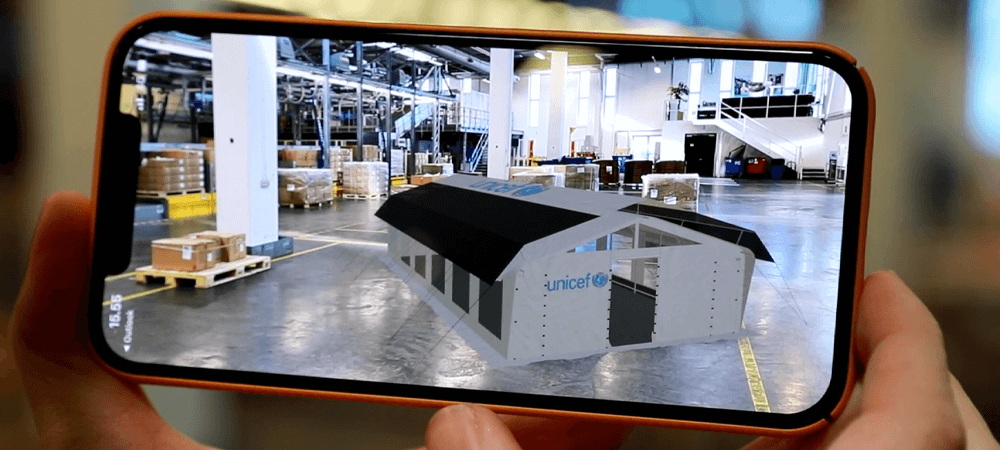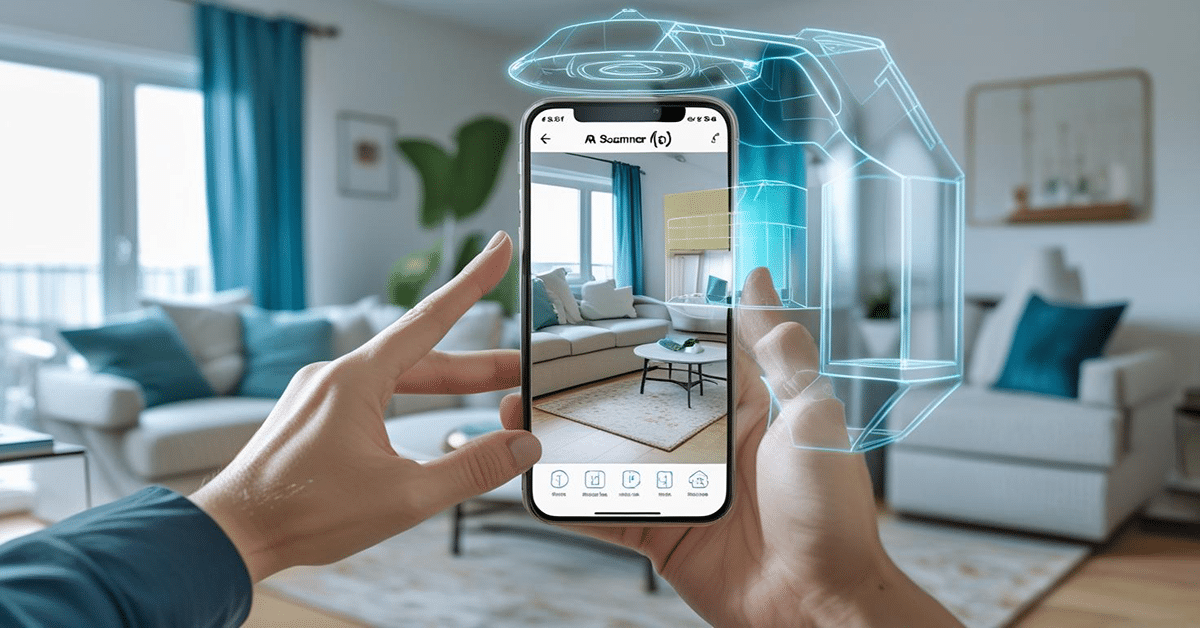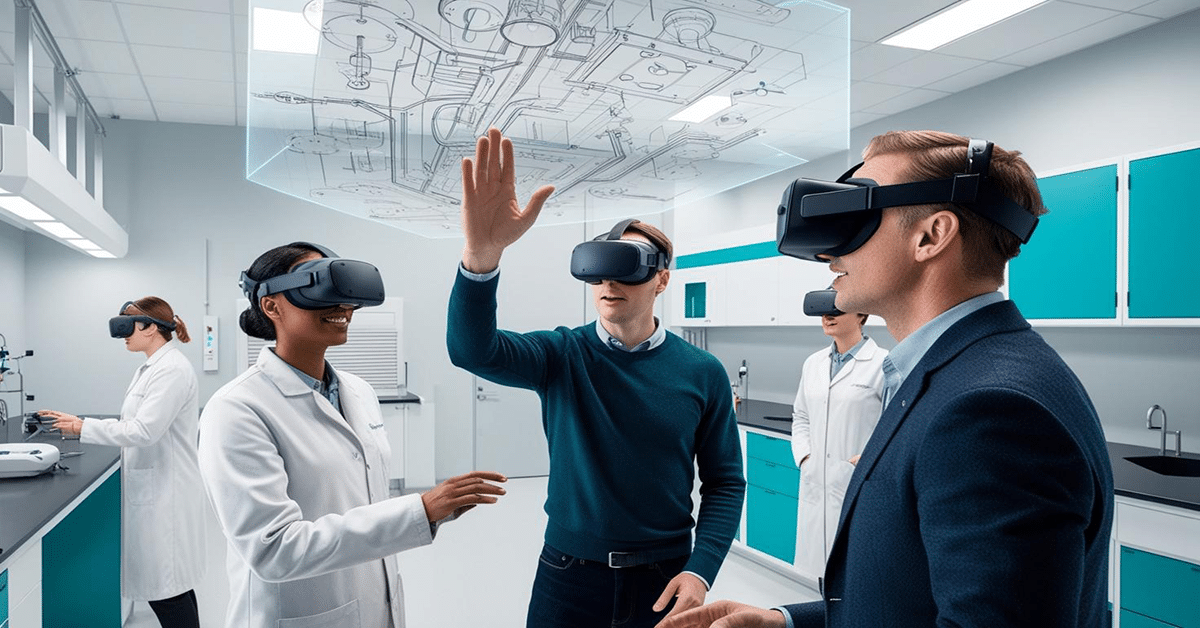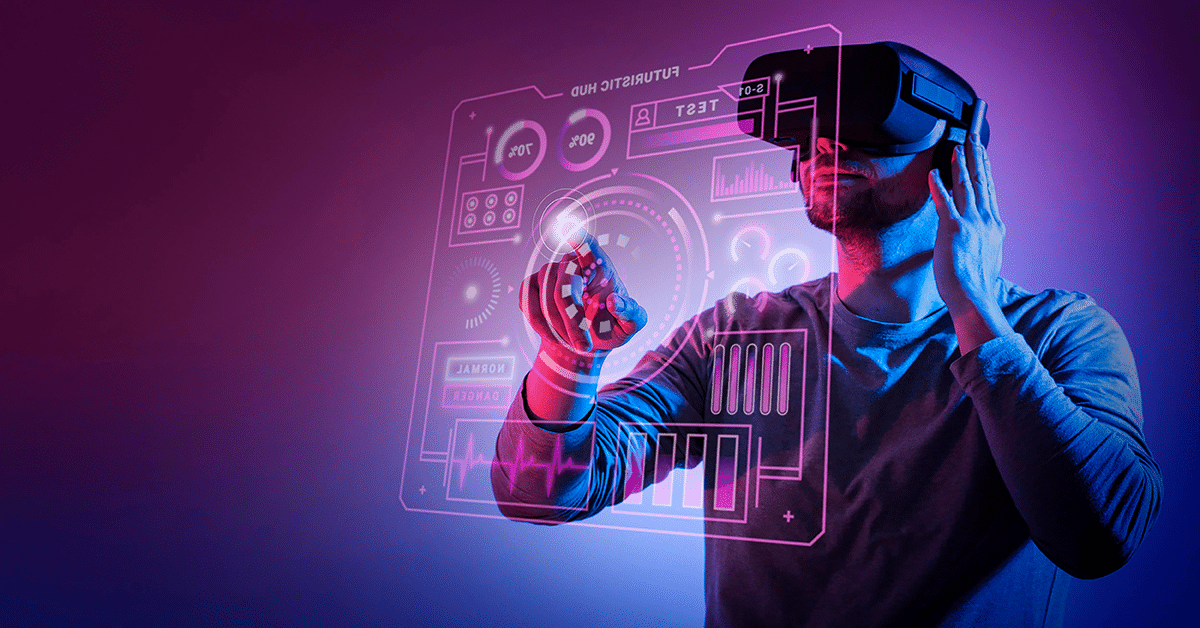The benefits of augmented reality (AR) can be seen within many different sectors. But some of the most exciting applications of AR have come from the business world. Companies use it to drive user engagement, open new markets, and more. Discover the most significant augmented reality benefits you can apply to your business.
Table of Contents:
- What Is Extended Reality?
- What Is Augmented Reality?
- What Is the Difference Between Augmented Reality, Mixed Reality, and Virtual Reality?
- Can Companies Use Augmented Reality?
- 8 Benefits of Augmented Reality for Businesses
- Comparing the Benefits of Augmented Reality and Virtual Reality
- How the Benefits of Augmented Reality Tie Into Emerging Technologies
What Is Extended Reality?
The benefits of augmented reality for business are that it’s a form of extended reality (XR). XR is a banner term encompassing computer technologies that meld the physical and digital worlds. The extent of that merger differs by implementation. For example, virtual reality with a VR headset is fully immersive. But other metaverse devices offer partial, rather than full, sensory input. The most common forms are virtual reality (VR), mixed reality (MR), and augmented reality (AR). You can discover more about XR in the article “Extended Reality; How is XR Changing the Digital World?“
What Is Augmented Reality?
Augmented reality is a form of XR specially tailored to real-time integration of a user’s view of the world with digital information. It augments your view of reality. AR can change how you see the things around you, add information through digital overlays, or combine both. The biggest benefits of augmented reality for business are its ability to easily blend 2D and 3D digital items with the physical world.
AR is typically used through either special glasses or standard smartphones. An AR device will take in a real-time view of the world and then overlay digital data on top of it. This can be done in a way that replaces elements of the physical with digital or adds to it. You can explore every aspect of AR in the article “Augmented Reality; Learn About AR Tech, Use Cases, Devices, and More!“
What Is the Difference Between Augmented Reality, Mixed Reality, and Virtual Reality?
You might wonder what the benefits of augmented reality are when compared to other XR implementations. Each delivers something different. For example, virtual reality industries create fully synthetic VR environments. AR adds to your view of the real world instead of replacing it. And mixed reality (MR) acts as a hybrid, merging physical and digital realities through projections, holograms, and other new technologies. Discover the fundamentals of MR in the article “Mixed Reality; Everything to Know About MR Technologies.“ And you can learn the full story of VR in the article “Virtual Reality; Discover VR, Its Components, Technology, and Players.“
Can Companies Use Augmented Reality?
The earlier descriptions have framed AR as something that adds to people’s perception of the world. And that’s among the greatest benefits of augmented reality. It doesn’t just add one element to a company’s toolkit. Rather, AR can enhance almost anything. This means that every industry has something to gain from AR. For example, IKEA uses AR to show people how new furniture would look in their homes.
The healthcare industry has been able to use AR to help legally blind children recognize faces. Some restaurants use AR to let guests see the various meals virtually before placing an order. And the entertainment industry has hugely succeeded in basing AR games and interactive experiences around movies and TV shows. You can find even more examples of companies using AR services in the article “Augmented Reality Industries; An Overview of All Sectors Using AR.”
Video: Say Hej to IKEA Place
8 Benefits of Augmented Reality for Businesses
The benefits of augmented reality are immeasurable, and more are constantly being thought up. But the following have already proven themselves as the best of the best.
Improve Training Capabilities
Training is one of the foundational elements of every business. However, it can also be a time and labor-intensive challenge. And this is precisely why training is one of the most essential benefits of augmented reality for businesses. Augmented reality can be used to train new employees on complex ideas. Instead of just describing concepts, an instructor can show them to the team through augmented reality. The same goes for specialized guidance. Imagine if someone needed an expert to help him work on a delicate task. With augmented reality, the expert could watch the work in real-time and offer step-by-step guidance. And it’s easy to apply these concepts to groups of any size. Overall, augmented reality is a highly effective way of increasing overall productivity. It helps people at almost every skill level and position within a company learn and teach.
Video: Atlas Copco Upskills Their Service Technicians with Augmented Reality Training Experiences
Reducing Production & Service Costs
Most businesses are looking for ways to decrease costs. And this is especially important when it comes to reducing both a company’s production and service costs. Thankfully, the benefits of augmented reality touch on both of those points. This is largely thanks to the fact that AR can directly improve cost optimization at almost every level. This includes optimizing design, maintenance, and production. The cost reduction comes about through increased efficiency from employees working in nearly every position. Consider someone whose job involves maintaining a company’s machinery. Augmented reality could dramatically reduce the time spent searching for the nature and location of mechanical malfunctions. And when those problems are located, AR can also help guide employees through the repair process. Even remote assistance can be offered through AR. All of that, taken together, would create a faster, more efficient, and more affordable solution on all levels.
Craft Exceptional Moments
Compared to other forms of extended reality, one of the exceptional elements of augmented reality stems from its ease of use. Most people couldn’t explain how a metaverse token relates to metaverse crypto. But they know how to use their smartphone. And it turns out smartphones are one of the best ways to access AR. This widespread availability is one of the biggest benefits of augmented reality. Virtual reality requires specialized headsets, software, and other hardware. But a company can easily put a QR code in a store to launch augmented reality experiences from a customer’s phone. This ease of use makes convincing people to try any AR experience easy. And when people do so, they can create truly exceptional memories. This is especially true since extended reality tech is so new, and it might be someone’s first, and therefore exceptionally memorable, experience.
Video: AR App Idea: Interactive Realtor Resources for Open Houses
Drive User Engagement
Few things can drive customer engagement, like user-generated content (UGC). The term encompasses a wide variety of different media. Everything from creative text messages on social media platforms to viral videos falls under user-generated content. It can even include more detailed examples like NFT art on metaverse avatars. But no matter what form the user-generated content takes, there’s one constant – it performs exceptionally well. The average performance of UGC is twice that of standard branded content. Face filters are one of the most easily recognized examples highlighting augmented reality’s UGC benefits. People enjoy using AR filters on their faces and want to share the results. And sharing the results helps to spread the company’s brand behind it. Even better, the goodwill translates to higher retention rates.
Video: AR Filter | Showreel
Eliminate Cognitive Load
Have you ever felt overwhelmed when a simple problem requires you to pour over complex documentation? It’s a common problem in this age of advanced technologies. So common that it has a name – cognitive load. Cognitive load is what you experience when you’re forced to grapple with more information than your working memory can comfortably handle. It impacts companies in several different ways. From making it harder for employees to handle new tasks to frustrating customers who want products to work without too much tinkering. Even people who don’t know the term are more than familiar with the experience. But can AR help solve this problem? Thankfully, the answer is yes, and it’s one of the most significant benefits of augmented reality for businesses. AR can present relevant points from documentation in summarized, easily accessible digital snippets. And this helps prevent people from feeling overwhelmed.
Boost Conversion
People often talk about how much-extended reality can boost conversion rates. And it’s one of the benefits of augmented reality that companies are typically most interested in. However, while this boost is accurate, it hasn’t been explained until now. Why do AR and similar experiences boost conversion rates? A 2022 Impact Factor study helped shed some light on the subject. The study found that AR can create improved “self-projection.” This describes when potential customers can project themselves into usage scenarios with a product they might want to own. AR helps to make a product feel more accurate to the customers. They can more easily visualize how goods and services fit into their lives. And this can be especially useful for larger items like furniture. Augmented reality can show people exactly what everything would look like in their homes and lives.
Video: Warby Parker | Virtual Try-On
Product Visualization & Customization
The ability to visualize how something would fit into your life is about more than just conversion rates too. The benefits of augmented reality extend to almost all forms of engagement. And there’s more to retail than that initial sale. AR can also be an effective way to ensure customers get the experience they want from a product. For example, consider how people relate to products that offer heavy customization. People often order a product only to discover that they like the base item but dislike the additional options they chose. But AR can let people work through those choices before placing an order. This helps to bridge the often quite significant gulf between expectation and reality. Doing so helps both consumers and companies alike. Customers will usually be more satisfied with their purchases. And companies benefit from fewer returned products when customers know exactly what they’re getting.
Video: Virtual Makeup Try-On Demo – Beauty AR Technology
Stand Out From the Competition
Standing out from the competition increases brand positioning, customer retention, and the number of new customers. But another one of the benefits of augmented reality comes from the fact that it’s still a relatively new technology. Most companies still haven’t had a chance to take full advantage of AR, even though it’s fairly inexpensive in development and deployment. You’ll instantly differentiate yourself when you’re ahead of the competition in AR. It’s also easy to work AR into marketing campaigns. Most people already have everything they need to experience AR thanks to smartphones. This makes it easy to develop and deliver unique brand-defining experiences to potential customers. Plus, when your company stands out in this way, it’s also leveraging many of the other benefits of AR. For example, when you use AR to differentiate your brand from the competition, you also increase engagement.

Image attribution: Unicef
Comparing the Benefits of Augmented Reality and Virtual Reality
While AR is amazing, it’s just one form of XR. Businesses use various XR implementations, like virtual reality, to become true metaverse companies. Many metaverse brands within VR have set up full shops or even own land. Even companies that mainly work with physical material, like the auto industry, are using VR for prototyping and training. And, of course, metaverse advertising and VR work exceptionally well together. You can easily create online experiences tailored to events, media, or new products. And you’ll find more usage scenarios in the article “Virtual Reality Industries; An Overview of All Sectors Using VR.“
How the Benefits of Augmented Reality Tie Into Emerging Technologies
Other emerging technologies like NFT, the blockchain, and artificial intelligence are often used alongside XR-related technologies. The deeper metaverse meaning often involves integrating every new advancement into a greater whole. For example, companies already use AI to create faster and more efficient marketing strategies. AI can analyze data at a rapid pace and work alongside human strategists. It can improve workflows with digital resources to build new AR or VR components. AI can add efficiency and speed to most tasks. You can learn more about AI-related business applications in the article “AI Marketing; Take Advantage of Artificial Intelligence Strategies.“
There’s only one issue among the various benefits of augmented reality. And that’s the fact that you only start benefiting when you decide to leap into that world. But there’s never been a better time to do so than now.
Did You Like This Article About the Benefits of Augmented Reality?
You might also be interested in the following articles:
- AR Marketing; Top Examples of Augmented Reality Marketing
- Metaverse Coins; What Is a Metaverse Coin & Where to Find Them?
- Metaverse ETF; Top 9 Metaverse ETFs to Consider Investing in









Leave A Comment